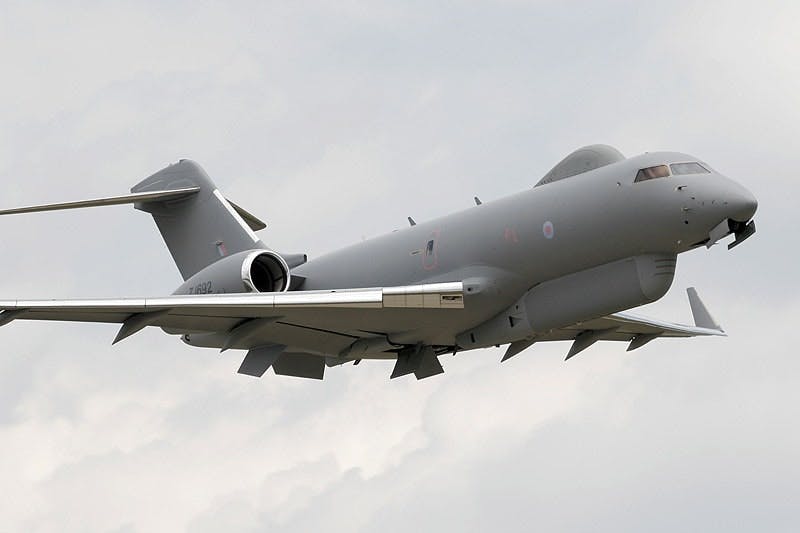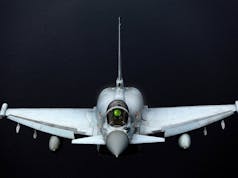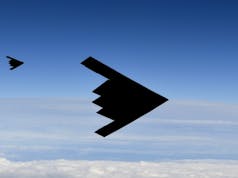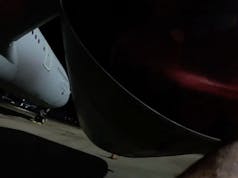A Royal Air Force Sentinel R1 surveillance aircraft, the entire fleet of which will soon be sold off, was this morning operating over Central Iraq as part of Operation Shader.
Operation Shader began six years ago on the 9 August 2014, when the Royal Air Force began a series of humanitarian air aid drops onto Mount Sinjar in Northern Iraq. You can read more about it from the Royal Air Force at this link.
Open Source Intelligence Twitter account SkyWatcher Intel is following the Sentinel aircraft, if you don’t follow them then I’d suggest you go do that now.
https://twitter.com/skywatcherintel/status/1341314660230963201
This comes not long after it was announced that Sentinel would finally be sold off after many reprieves. You can find out more about the sale by visiting the article below.
What does Sentinel do?
The aircraft, described on the Royal Air Force website as “the most advanced long-range, airborne-surveillance system of its kind in the world”, provides long-range, wide-area battlefield surveillance, delivering intelligence and target tracking information to British forces.

The aircraft has been operationally deployed in support of operations in Afghanistan, Libya and Mali, and was recently deployed in support of British and Coalition operations in Iraq and Syria as well as surveillance operations near the Russian border.













How easy would it it be to take the radar off give it any updates available and install it on another aircraft?
James, it’s the Radar which is the issue due to obsolescence and increasing cost of maintenance.
I thought it was the sub systems that were obsolete, I’m just confused why they cant be upgraded. The sentry is old and so its understandable to put the upgrade money into new aircraft but the sentinel is relatively young so wouldn’t it be worth it?
It’s worth noting the entire concept is dated which is why the USA has not replaced theirs. It’s fine for chasing terrorists but I would not fancy taking it any where near an s400 in a shooting war.
The thing is though we are much more likely to be searching for terrorists in Iraq, Syria and Afghanistan than than searching for armoured battalions over Russia. Unless the capability is no longer required it doesn’t make sense to scrap it.
Does the RAF website need updating? ….described on the Royal Air Force website as “the most advanced long-range, airborne-surveillance system of its kind in the world”
Announcing the scrapping of some of the most valued enablers that most of our NATO allies can’t bring to the table – seemingly without replacement – just days after senior air chiefs reaffirmed an ambition to buy all 138 F35….
It just beggars belief!
not the first time we have done this
The F35 will also be a very effective ISTAR capability, among it’s many other capabilitys.
Afternoon Robert (if I may), I believe you are correct wrt the F35, but the emphasis is on WILL, we don’t have enough, yet – nothing new there!!!
Time will tell ref numbers I know, but, as alluded too already, this is one capability that very few of our allies possess!
Not sure if we will ever get a replacement per se – maybe the RAF can leverage something out of any additional P8 buy with the gondola pod fit, but, it would be very high on my xmas pressie list if given the choice. Would even be prepared to forgo a few F35’s to acquire some replacements – radical I know!
Its a bit frustrating given the lack of additional info when MOD announces cuts like this etc, surely it cant be a secret if we are intent on ever replacing such assets!!!
Yes, but it was announced in 2015 SDR that Sentinel would be withdrawn from service in 2021, so it’s not new news. And Sentinel is a very niche capability that has served us well. But as it is unlikely we will be getting involved in high end warfare in hot sandy places again anytime soon, and with the advancement in capability of UCAV’S and satellite technology that will be able to replicate such capability, the writing is on the wall for Sentinel. Even the Americans want to retire it’s fleet of E-8C JSTARS for similar reasons.
It *might* be that the combination of Rivet, P8, Wedgetail with F35 and satellite stirred in gives almost all the capabilities.
We will never know precisely what Sentinel does, nor should we.
Lets be thankful that
Precisely, well said. ?
Ssshh!…dont give too much information away ?
Spot on assessment in my view and like noted elsewhere not really new news.
Appreciate it’s not new news, but I doubt we envisaged getting involved in those hot sandy places when initially ordered.
Yes, agree their is lots of new stuff about, that could be used to cover bits as and when, it’s still a big loss that hasn’t been fully replaced anytime soon!
The thing WRT to the USA, is that they will have a system/systems up and running before they retire their JSTARS fleet.
And maybe so will we, just in a different form, and spread over a number of systems instead of a single role platform. These are the tough choices we have to make if we want more cyber security, more escorts for the RN, more F35, Tempest ect, and introduce P8 E7 and Protector. The RAF’s ISTAR fleet is still the leading capability in Europe, and with the introduction of P8, Protector, and more Shadow R1’s in service, more numbers too.
Not radical, Deep.
I’m of the same opinion.
Time but not the funds to replace with the SAAB globaleye
The technology requires less airframe as advances are made for example E3 to E7
Well, I guess there must be a really good reason to get rid of these …… and another reason that this is a good thing to be doing..,…. now ?
Well its worth recognising that these platforms were committed to at the turn of the century in a very different world in terms of threat assessments to that which we have today. They were and are useful for counter insurgency, but by 2010 the world was starting to look like it was going to be rather different environment with resurgent high level threats. That perspective has only been reinforced since.
So we have a battlefield surveillance aircraft that is very unlikely to survive over anything approaching a peer battlefield, as long as the adversary has any counter air capability.
And then there’s the cost to operate for what has been relegated to a primarily counter insurgency asset – https://publications.parliament.uk/pa/cm201415/cmhansrd/cm140901/text/140901w0004.htm#14090213000032
Had we upgraded the platform previously, or committed to do so now, then the costs would clearly have been greater and still wouldn’t address and counter the high end threat to the aircraft.
Would it be fair to say that in any future peer/near peer conflict, Sentinel would be too vulnerable to long range SAM systems designed to take out AWACS and tanker aircraft at stand off ranges? This would push future efforts towards a stealth solution such as F35
I’d say that’s a very fair observation.
Sentinel is described as a battlefield and ground surveillance aircraft. The only battlefields we can use it over without putting the aircraft at great risk (countermeasures notwithstanding) would be those constrained to only having manpads which top out at ~15k feet altitude. Counter-insurgency roles in other words. Perhaps this is why the UK has 8x Beechcraft Shadow R1 as low operating cost aircraft for counter insurgency, along with Watchkeeper, Reaper/Protector and perhaps even Defender and Islander.
As far as higher end battlefields, there are plenty of “old” SAM systems like BUK, S300 and similar Chinese systems, along with their export variants, whose missiles can attain the altitude Sentinel operates at, let alone modern peer weapons. For high end sophisticated conflicts the system-of-systems approach will replace Sentinel and the USAF JSTARS, combining data from ground, air and space based sensors, F35 being one part of that
Whilst agree with the point, the counter argument is which realistic wars are we likely to fight, counter insurgency or near peer, and I would argue counter insurgency is significantly more likely.
I agree that counter insurgency is more likely, but do we need such a high end expensive to procure and operate asset as Sentinel for that in future, versus use of other existing and developing platforms, some of which I outlined?
We also cannot assume that a peer or near-peer conflict is not a possibility and so have to have credible capabilities for such a scenario as a deterrent at minimum. How many predicted the Balkans, or Crimea and the Donbass, or Iraq invasion of Kuwait. Can we be certain about a future Russia under Putin, and what happens with Putin’s succession, which must inevitably happen. Do we know what that would look like in terms of new leadership and their intent? Can we know when? What happens in the ME if another country equipped with modern capabilities attacks its western orientated neighbours? Maybe we avoid involvement in any and all such scenarios, but history suggests otherwise.
Logically, if we believed that near-peer conflict involving the UK is virtually non-existent, then there would be no need for CASD or conventional high end forces. The reason we maintain the high end capabilities is to deter such high end conflicts. But to be able to deter they have to be credible. Sentinel may be a useful albeit expensive asset in a permissive environment, it would not be so against peer and near-peer adversaries and so is not a credible asset. Better we develop systems that are.
I guess the question is what capability does it bring when it comes to counter insurgency / low tier warfare and is that capability needed / provided elsewhere.
Janes, 23 Dec 20, article “Raytheon offers multiple-intelligence aircraft solution to meet RoKAF’s ISTAR requirement”. Its a Global 6500 with AESA, electro/optical infrared sensors +signals intelligence suites.
Looks like an evolved Sentinel.
If RoKAF adopts it, it gives the RAF the chance to replace old Sentinel, with new evolved, son of Sentinel.
Why is it being sold if it is still effective in limited roles? All aircraft are effective in some role, none are effective for all roles.